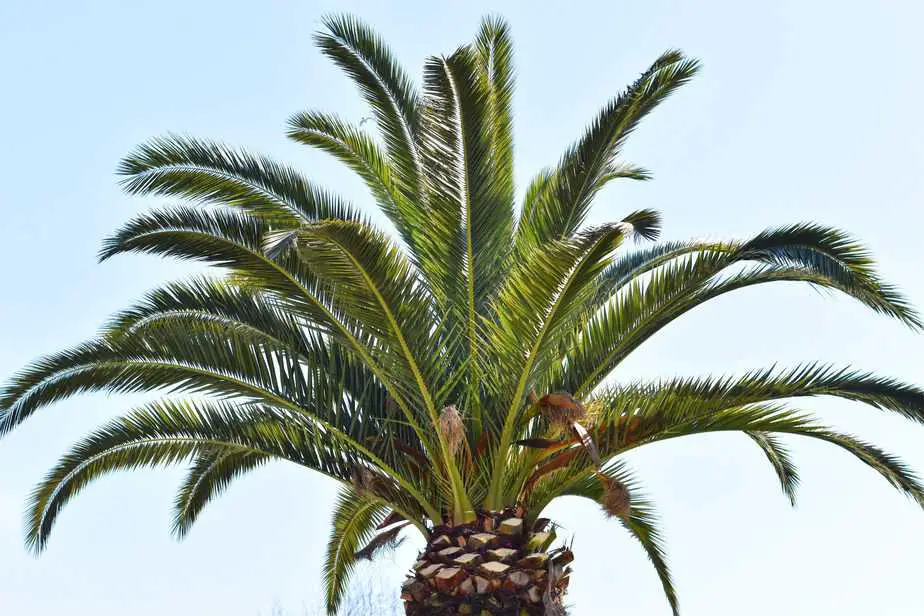We’re all familiar with this sad story. What was once a lovely tree is now showing its age, or perhaps its root system has spread so far that it is causing damage to foundations or sidewalks. Although we know having trees around is good for us – for our wellbeing, filtering our air, and just giving us a comforting piece of nature in our concrete jungles – it is sadly time to say goodbye to the tree. In this article, we’ll be covering step-by-step on how to remove a palm tree stump!

Table of Contents
Cutting The Palm Down Is Only Part Of The Story
The palm tree family makes life a bit easier on this front for a couple of reasons. One is because its trunk does not have huge numbers of branches spreading out from it. Its leaves grow out directly from the trunk, making it a lot easier to trim and then cut down. Secondly, its root system is so different from that of other species. Unlike other tree species whose root systems have more than one growing point, the palm roots start from one point, and all spread directly from there. But it is just the same as all other trees in that once you cut down the tree, you are left with the stump. And the problem of removing it.
Why Remove The Stump
There are many reasons why you should remove the stump:
- If you are found to be in breach of any bylaws, you may be up for a penalty, so time may not be on your side when it comes to stump removals. In this case, you may need to head straight for a professional who can attend to removing your stump promptly.
- You don’t want to be responsible for someone falling over the protruding stump in the ground. This can more commonly be the case for people who were unaware you previously had a tree (so are not looking out for a stump), or insufficient lighting, causing someone to stumble.
- Disease or pests can still live in a tree stump – after all, some like termites are particularly fond of wood, and although your tree isn’t there anymore, the wood is not dead yet. These can also migrate to other trees and plants, causing more damage.
- It may interfere with your new landscaping plans
One thing to be happy about is that, unlike Chinese elm, ash, or cottonwood varieties, the palm tree stump will not shoot suckers. Once a palm tree is a stump, it will stay just that. This makes tree removal just that much more simple.
Methods Of Removal
There are several methods for removing your palm tree stumps. None are going to be quick or easy, so be prepared for some hard work. Most rely on starving the roots of nutrients in some way.
Digging out the root ball
This will be hard work in the first instance, but it means the tree removal is complete in one step. You will need to dig around the stump – not close up, but 6-12 inches away – and then a trench of about a foot deep. From here, you can start to dig underneath the stump and lever it out.
This has the effect of chopping the roots which remain in the ground, ending their nutritional supply. They will die off naturally.
Grinding out the roots
Because palms aren’t a hardwood, the stump can be easily ground out using a stump grinder. (Technically palm trees are neither hard nor softwoods.) Grinding a stump requires a particular piece of machinery, which can often be hired, but once you get going, the palm stump is taken care of quite quickly. You will need to grind below the ground level of the stump to make sure the area can be leveled out when you’re finished.
Grinding stumps is by far the quickest method to be rid of your palm for good, but may not be an economical method.
Chemicals
To remove your palm stump, drill holes into the stump about 8 inches deep. Pour your chemical into the holes and top up with a small amount of water. Cover the palm tree stumps to keep dry. Over time, the chemical kills the roots, causing the tree stumps to become deadwood and easier to remove.
The most common chemical used in this way is potassium nitrate.
It is vital to take care when using these sorts of chemicals as they can cause irritation to your eyes and skin and give off toxic fumes. It would be advisable to leave usage of these to those trained in stump removal.
Less toxic chemicals
If you wish to use a less potent variety, then Epsom salts are worth trying. You may already have these as dissolved solutions work very well for tomato growth or better rose blooms.
The irony here is that as a dry concentrate, Epsom salts dehydrate the root system, causing decomposition and easier stump removal afterward.
The Epsom salts are poured into drilled holes, as you would with other chemicals. Top up with a little water to moisten the powder and then cover to keep dry. Reapply every three weeks or so until the roots are dead. You can then complete your tree removal by clearing the area.
As with any job in the garden, make sure you wear the appropriate protective equipment for the task.
Conclusion
Like many other trees, getting rid of a palm tree stump is not a straightforward task. It will take quite a bit of effort if you are going to remove it yourself. The root system of a palm is more in your favor to remove the stump out of the ground, but as tree removal is never an easy process, rope in a friend or two to help share the load of clearing the area.